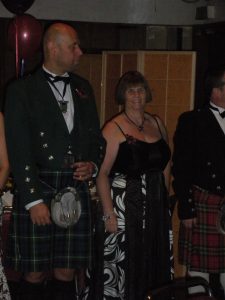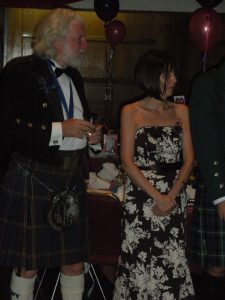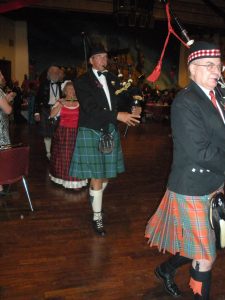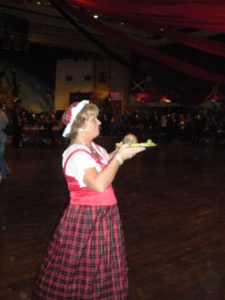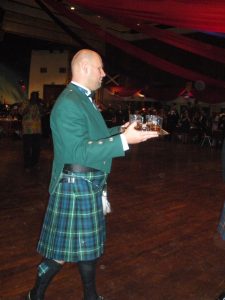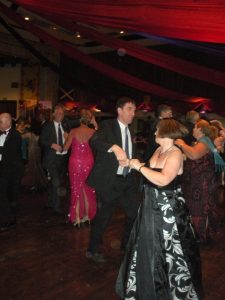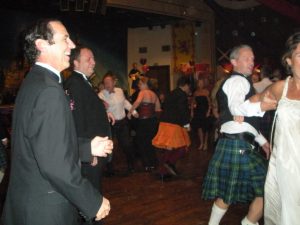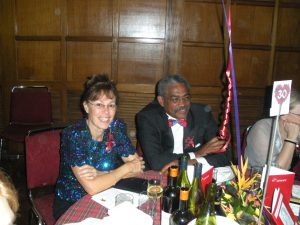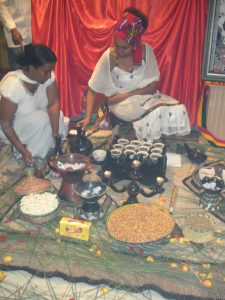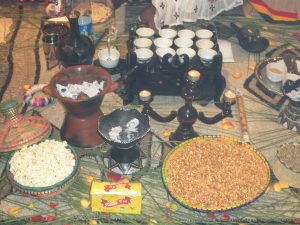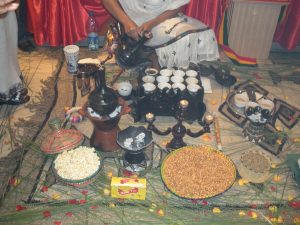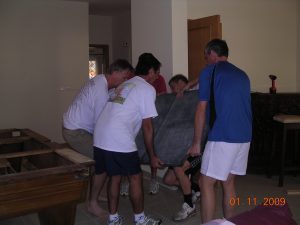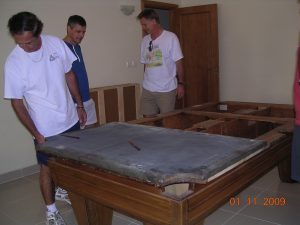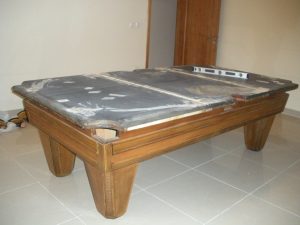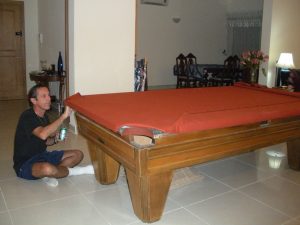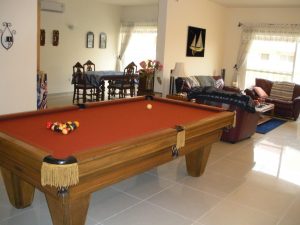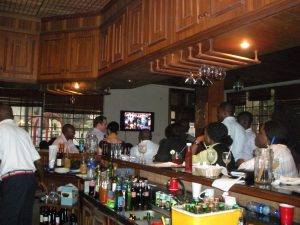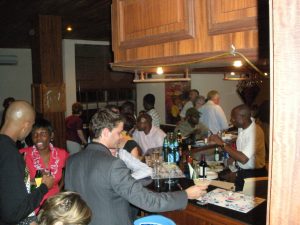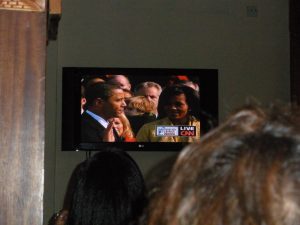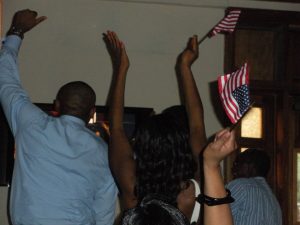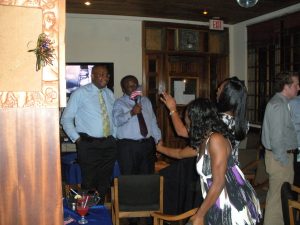Today I made the journey to the mainland to visit one of the American Women’s Club (AWC) charities. We actually went via bus with black out curtains donated by Mobil Oil for the morning. The driver was in a coat and tie with an armed guard in the front passenger seat. The adventure began when the driver missed the exit and took a shortcut down dirt streets lined with people not vehicles. It was barely passable. However, we made it to our destination via this colorful route.
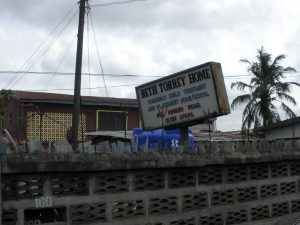
The Beth Torrey Home is in Apapa, an area near the port of Lagos.
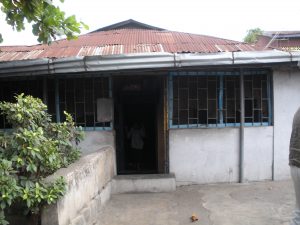
This home has 17 mentally and physically challenged children cared for by a staff of 7. The children greeted us with song, “Welcome to the home of the Lord”.
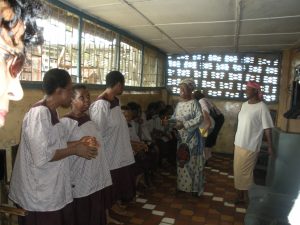
AWC supports this charity with in kind gifts (mattresses, toys, clothing and food) as well as by paying the salaries of the workers. Several of these children recently participated in the Nigeria Special Olympics and proudly showed us their photo album of the event. We toured the one building facility and met with all the staff.
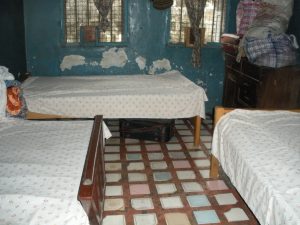 One of the bedrooms
One of the bedrooms
They have electricity via a donated generator. As we toured the kitchen I noticed a freezer that had a plaque on it stating “Donated by Shell Nigeria Petroleum” (Rocky’s employer). It was a very clean environment with caring staff.
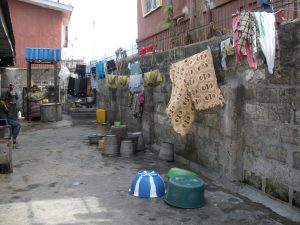 The outdoor kitchen & laundry
The outdoor kitchen & laundry
The staff and children were greatly appreciative of the personal care items that we brought today as well as the 100 pound bag of rice. The AWC in coordination with another group has helped the home purchase a new 3 building facility (living quarters and learning complex) which they hope to move into shortly. Hopefully I can visit the new complex and show it to everyone.
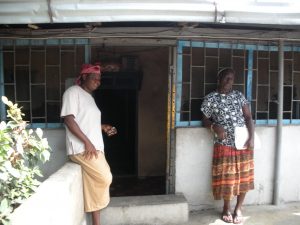 The head mistress Mrs. Opie and her assistant. One of them is in the home 24 hours a day caring for the children. Mrs. Opie has been here 27 years.
The head mistress Mrs. Opie and her assistant. One of them is in the home 24 hours a day caring for the children. Mrs. Opie has been here 27 years.
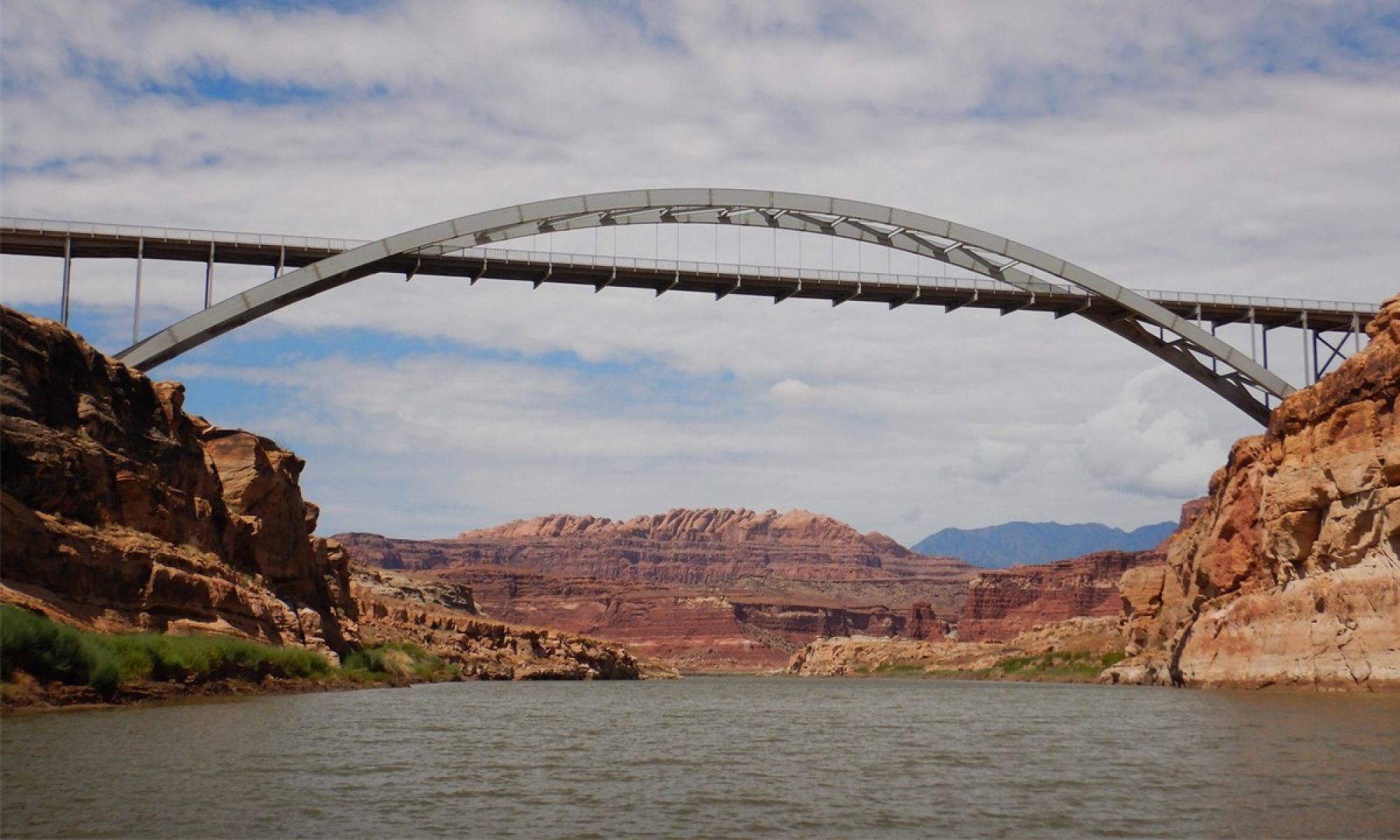
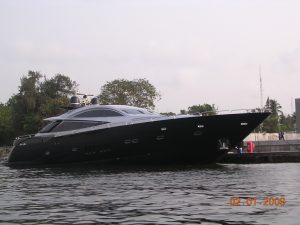
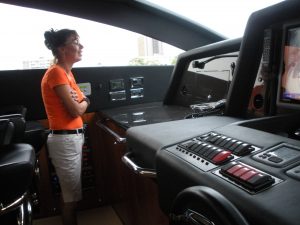
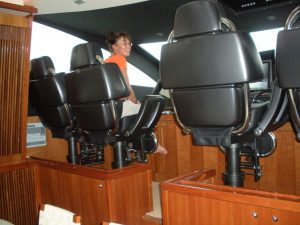
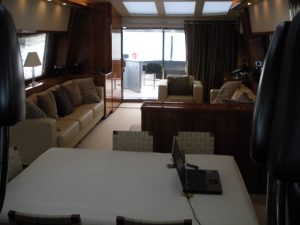
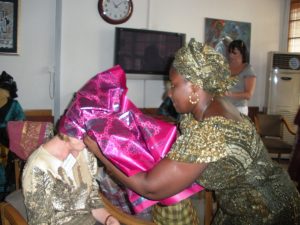
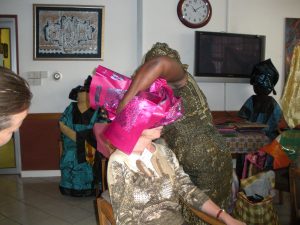
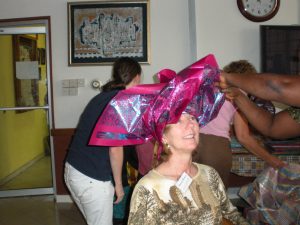
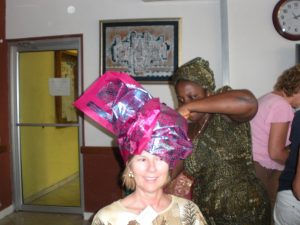
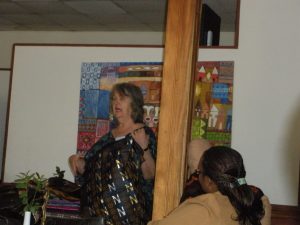
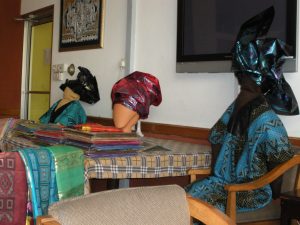
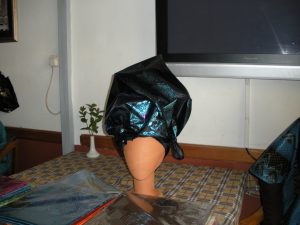
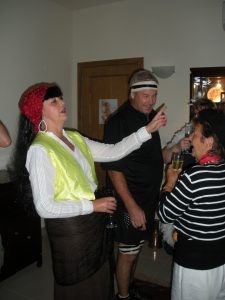 A Gypsy & Rugby Player
A Gypsy & Rugby Player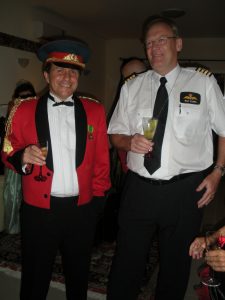 A General & a Pilot
A General & a Pilot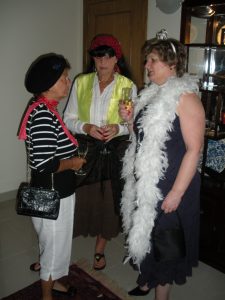 A French Boy, Gypsy & a Floozie
A French Boy, Gypsy & a Floozie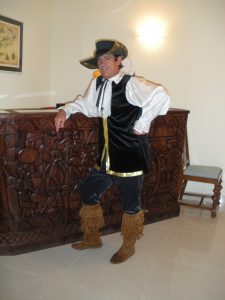 The famous pirate Guy
The famous pirate Guy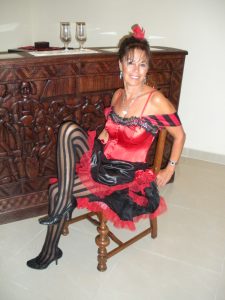 A Floozie
A Floozie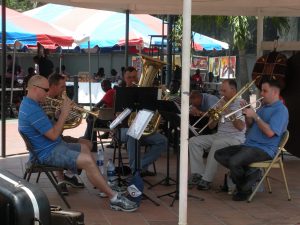
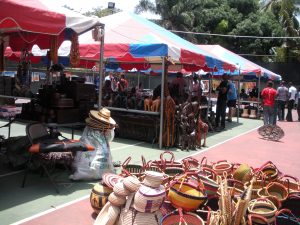
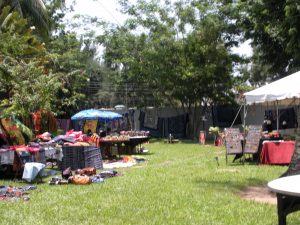
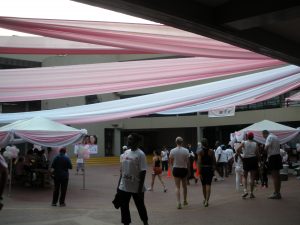 School courtyard awash in pink & white ribbons
School courtyard awash in pink & white ribbons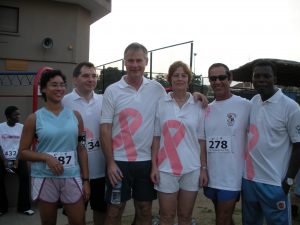 Rocky and Friends
Rocky and Friends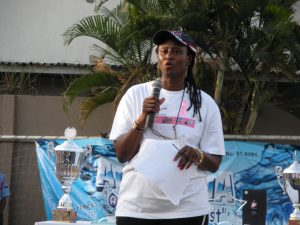 Ambassador Sandoers motivating the runners.
Ambassador Sandoers motivating the runners.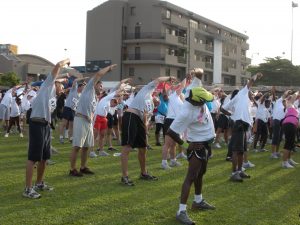 Warming up
Warming up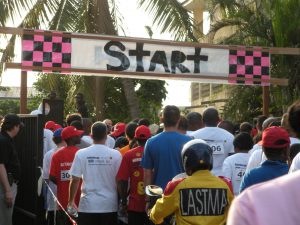
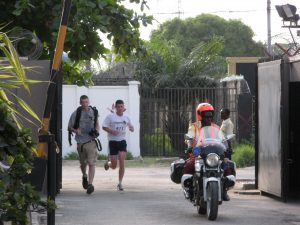 The Winner -a navy man!
The Winner -a navy man!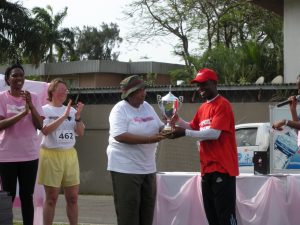 The ShopRite man took second place.
The ShopRite man took second place.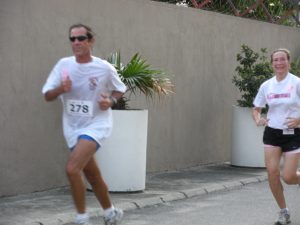 Here comes Rocky!
Here comes Rocky!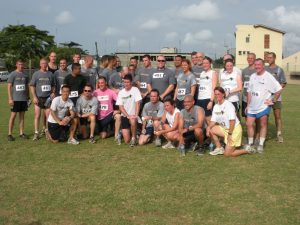 Navy and Marine participants
Navy and Marine participants